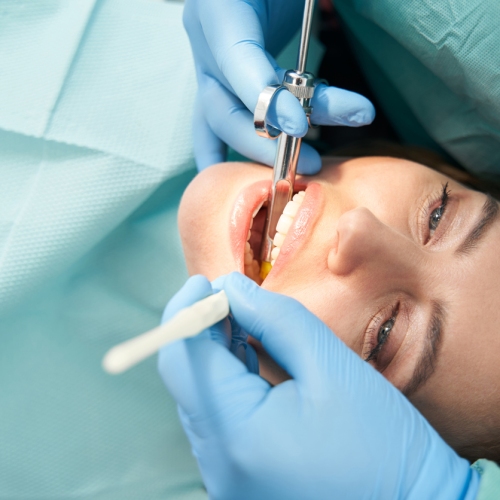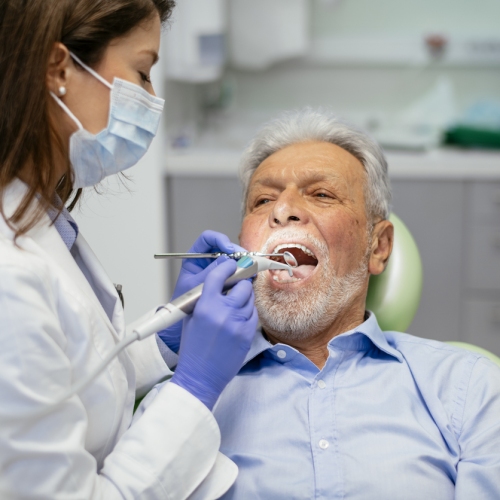- Patient
A dentist who treats children should be able to accurately assess the child’s developmental level, attitudes, and temperament to anticipate the child’s reaction. Factors that may contribute to noncompliance include fears, anxiety, a previous painful dental experience, pain and inadequate preparation for the encounter among others.
However, only a minority of children with uncooperative behaviour have dental fears. Actually, it may occur when there is a perceived lack of control or potential for pain, especially when a child has had a painful healthcare experience.
- Parents
Parents who have had negative dental experiences as a patient may transmit their own dental anxiety or fear to the child. Moreover, parental expectations for the child’s response to care (e.g., no tears) are frequently unrealistic, while expectations for the dentist who guides their behaviour are great.
- Dental environment
The reception staff will often be the first contact with the patient and their tone of communication should be welcoming. A caring and assuring attitude towards the child welcoming will play a significant role in their visits so it is manner in which the child is welcomed into the practice at the first and subsequent visits is important.
Staff should provide relevant information and may suggest a pre-appointment visit to the dental office to meet their doctor and the staff.
A child friendly environment (e.g., age-appropriate toys and games) can provide distraction and comfort to young patients. These first impressions may influence future behaviours.
- Patient assessment
An evaluation of the child’s cooperative potential is essential for the treatment planning.
- At the beginning, information can be gathered from parents through a questionnaire regarding child’s cognitive level, temperament/personality characteristics, anxiety and fears.
- Afterwards, the dentist can evaluate cooperative potential by observation and interaction with the patient.
- During treatment, dentist must remain on alert to physical and/or emotional indicators of stress. Changes in behaviours may require alterations to the treatment plan.
- Dentist/dental team attitudes
The dentist’s attitude, body language, and communication skills are critical in order to create a positive dental visit and to earn trust from the child and parents.
Once a procedure begins, bi-directional communication should be maintained, dentist should consider the child as an active participant. Explain to the patient exactly what is required from his/her side to be cooperative.
Another useful tip is to ask the child ‘yes’ or ‘no’ questions where the little patient can answer with a ‘thumbs up’ or ‘thumbs down’ response. Also, observation of child’s body language is necessary to confirm the message is received and to assess comfort and pain levels.
The dentist should consider the patient’s development, as well as the presence of communication deficits, when choosing specific communicative guidance techniques.
- Other recommendations:
- Positive pre-visit imagery
Preview positive photographs or images of dentistry and dental treatments before the dental appointment to provide children and parents with visual information on what to expect during the dental visit.
- Direct observation
Prior to treatment, show a video to observe a young cooperative patient undergoing dental treatment to familiarize the patient with the dental setting and specific steps involved in the procedure.
- Tell-show-do
The tell-show-do technique involves verbal explanations of procedures. It operates with communication skills (verbal and nonverbal) and positive reinforcement.
- Ask-tell-ask
This technique involves inquiring about the patient’s visit and feelings towards any planned procedure to assess anxiety. Confirm that patient and parents are comfortable with the treatment before proceeding.
- Voice control
The objectives of voice control are to gain patient’s attention and compliance and avoid negative behaviours.
- Nonverbal communication
Reinforcement and guidance of behaviour through appropriate contact, posture, facial expression, and body language to enhance the effectiveness of other communicative guidance technique.
- Positive reinforcement and descriptive praise
Positive reinforcement rewards desired behaviours. Descriptive praise emphasizes specific cooperative behaviours.
Social reinforcers include positive voice modulation, facial expression, verbal praise, and appropriate physical demonstrations of affection by all members of the dental team. Non-social reinforcers include tokens and toys.
- Distraction
Divert the patient’s attention from what may be perceived as an unpleasant procedure. Distraction may be achieved by imagination, clinic design, and audio and/or visual effects.
Giving the patient a short break during a stressful procedure can be an effective use of distraction.
- Desensitization to dental setting and procedures
Systematic desensitization is a psychological technique that can be applied to modify behaviours of anxious patients. Patients are exposed gradually to different kind of components related to a dental appointment that cause them anxiety.
Parents may model actions and practice with the child at home using a dental mirror.
Successful approximations would continue with an office tour during non-clinical hours and another visit in the dental office to explore the environment.
- Enhancing control
Enhancing control is a technique used to allow the patient, especially an anxious/fearful one, to assume an active role in the dental experience. The dentist provides the patient a signal to use if he/she becomes uncomfortable or needs to briefly interrupt the treatment. The dentist should quickly respond with a pause and acknowledge the patient’s concern.
- Parental presence/absence
Parents’ presence or absence sometimes can be used to improve cooperation. Some parents desire to stay during their child’s treatment, which does not mean they distrust the dentist.
Dentists should get used to the parents’ involvement and be open to receive questions and concerns from their children. They must consider parents’ requests and be open to a paradigm shift in their own thinking.
- Picture exchange communication system
The objective is to allow individuals with limited to no verbal communication abilities to express requests or thoughts using symbolic pictures. A prepared picture board may be available during dental appointment, so the dentist is able to explain easier each step. Patients may also have symbols to use if they need a brief interruption during the procedure.
Source: https://www.aapd.org/globalassets/media/policies_guidelines/bp_behavguide.pdf




































